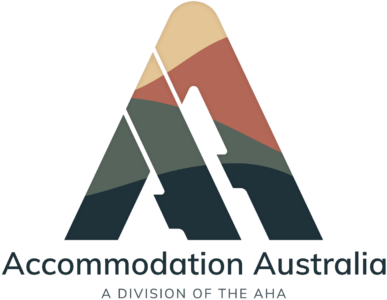Talk to us about your Accommodation Business
The accommodation sector is an industry exposed to a diverse range of strategic and operational risks. The risks vary considerably depending on the style of accommodation, location, target customer demographic and, ownership structure. And with the growing prevalence of online accommodation market places, we’re seeing increasing competitive pressure on accommodation owners and operators.
In our experience, owners and managers focus on the business objectives of:
- Optimising occupancy and income
- Enhancing brand reputation and encouraging loyalty
- Maintaining their property assets within budget
- Patron safety.
Risks, even occurring in isolation, can impede the ability of owners and managers to meet these objectives.
How we can help
While accommodation businesses may have common business objectives and experience the same risk issues, there are unique aspects to every situation. These unique aspects demand a tailored approach to risk management and insurance.
Whether your business is a national chain of budget hotels, bed and breakfast, inner city student accommodation provider, motel, or holiday resort, we will apply the Barrack Broking Principles to ensure you meet your specific business objectives.
In partnership we'll be:
- Asking what business success looks like and identifying the impediments to reaching your targets.
- Adding value by thoroughly investigating your existing risk management activities and making recommendations on refining or enhancing activities so that we can present the business in the best possible light to the insurance market.
- Talking your language and benchmarking your progress using metrics that are meaningful in your business, for example, the cost of risk per room or bed.
Specialisation
Case study:
Optimising Risk Spend in the Accommodation Industry
This large hotel group has interests in luxury hotels, pub venues, and gaming. It holds an unwavering objective to promote the tourism sector in its 30 locations across urban and rural areas. The diversity of interests brings about challenges in:
- Managing the various risks in a uniform way.
- Gathering the necessary information required to properly consider and insure their risks. Management time and company money spent on risk management and insurance cover was escalating over time.
Our partnership commenced with a comprehensive review of:
- Business objectives and values
- Type and frequency of information being produced, and
- Risk and Insurance alignment.
We discovered some long-standing and outdated risk management processes in place that were adding to the client's workload while emerging risks were not being addressed. More specifically:
-
The same risk surveys were being completed every year on assets that had not materially changed.
- Emerging areas of risk, such as technology, had not been rigorously assessed.
-
There was no coordination in the collection of risk information around the business.
Following our advice, the business:
- Reduced, by 30% per year, the time spent by management on information gathering. This was achieved by: prioritising activities over a three to four year cycle; leveraging external risk specialists and insurers; and creating a road map for these activities.
- Reduced its costs in engaging consultants.
- Reduced its insurance costs, as the insurers were presented with the client's logical and coordinated approach to managing their risks.
Access to a comprehensive range of insurers
Different types of accommodation across Australia share many common features, although there are unique aspects to every property risk. All types of accommodation providers can benefit from our services to source the most comprehensive range of insurance offerings. Some of the property types we’ve helped include:
- hotel,
- motel,
- motor inn,
- caravan park,
- sericed apartments,
- bed and breakfast,
- timeshare,
- holiday parks,
- guesthouses,
- management rights.
No matter what type of property you’re looking to protect, we aim to ensure that you hold an insurance package covering your unique risks.
Our methodology for finding the right insurance package for every accommodation provider:
By applying our distinctive Barrack Broking principles, we help protect unique property and management liability risks via a tailored risk management approach. A solution to suit your unique business starts with the following methodology:
- Spend time with you to help you collect the information required to prepare a detailed insurance submission. Detailed submissions are increasingly important as the demands for risk data switch between underwriters.
- Conduct a thorough investigation of the existing liability management activities and, using current best practice, make recommendations on what actions can be refined or enhanced.
-
Prepare a detailed submission for our panel of insurance underwriters specialising in alpine accommodation insurance. Of course, exclusions apply; however, understanding the intricate details of your business allows us to deliver bespoke insurance solutions.
Our services extend beyond providing general advice — we look to ensure that every liability is considered, extending from that of your premises to management liability and beyond. Our clients know that we will be with them to support them through a claim, which simply cannot be said for most insurance providers in Australia.
In a market where insurer capacity is scarce, you can rely on Barrack Broking to help you obtain the right cover by presenting your property to the broadest range of insurers in the most reputable way. Contact us today.

